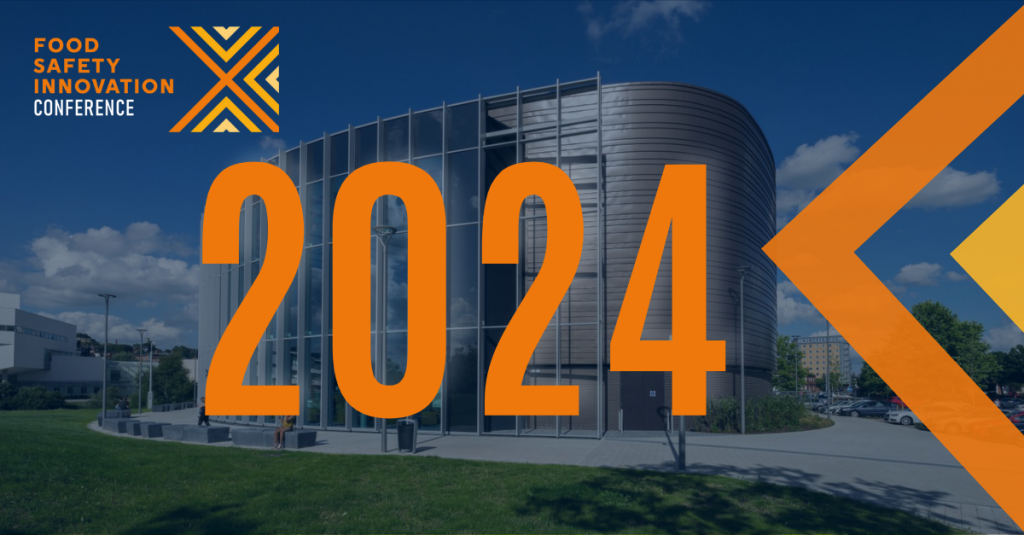Navigating Food Safety Challenges:
Insights from the FSI Conference and Strategies for Success
Building on the monumental success of last year’s FSI Conference, we decided to summarise the key takeaways from the panel discussion. The session delved into strategies for navigating the existing challenges within food manufacturing environments.

2023 Panellists: Alec Kyriakides, Phil May, Katie Satterthwaite, John Michael Piggott, Kelsey McEvoy, Denis Treacy.
What is your top food safety concern and how would you address it?
Quality assurance was a major concern here, as a common problem is when QA teams have to deal with a plethora of audits. This can distract QA teams from managing workplace risks being assessed by the MPD teams. One solution is to ensure that each site has the means to conduct effective risk assessment, which involves the auditors being met by each factory’s general manager or engineering manager, with the QA team brought in only when necessary. This allows teams to maintain focus on their priorities.
Another common risk is that every industry is being pushed so hard to digitise. This means a lot more data that has to be analysed, interpreted and presented, which if done incorrectly can cause risks to be missed. The solution is for food safety leaders to develop a better understanding of digital platforms, what they can do, their limitations, and how the data can be used to inform crucial decisions. In addition, as important as data is in operational management, a business must never lose sight of the fact that these digital platforms don’t replace a functional site leadership team or a site’s food safety culture.
Meanwhile, supply chains are growing ever more complex and with that comes a greater complexity of ingredients. This can increase risks, which means that problems need to be detected as early as possible and managed effectively right away. To achieve this, communication is key between food manufacturing businesses and their many suppliers.
The capability of food manufacturing facilities was another major concern, as it’s not just the equipment within factories that needs to be suitable but also the wider infrastructure, such as floors, walls and drains. This requires significant investment to ensure that operations run smoothly both now and well into the future, as food businesses need to remain profitable but their long-term operation also has to be given due attention.
Finally, recruitment and employee retention are problems faced by food production businesses. This requires investment in PPE, training and other areas that will make staff feel protected, valued, capable and satisfied in their roles.
How does a business maintain a consistent level of quality or food safety performance when the workforce is often composed of transient agency staff?
The solution is to think very carefully about which roles are critical, which are core, and which are not. This means risk assessing each role and deciding their level of criticality, followed by applying whatever resources you have that are proportional to those roles.
Everybody wants to do a good job, but the trick is to make sure that new starters are inducted properly and that they’re part of the culture from the start, otherwise they will lack the knowledge required to excel in their roles.
However, there are some people who simply want to be employed and have no plans for career progression, which means the business needs to prevent them from being placed in high-pressure roles. Individuals who are satisfied working in the same role on a long-term basis are just as crucial to a business as those who want to climb the career ladder.
How do you maintain assurance of food supply chains in the current environment?
It was unanimous that an excellent supply quality team is required. A food production business needs people who are proactive and adaptable, as that way they can anticipate and quickly respond to changes such as supply chain issues.
A specific mindset that combines agility, team spirit and problem solving enables a food business to traverse the many challenges posed by local, national and global socio-political events.
What are the key steps to developing an internal culture focused on food safety?
The panel agreed that everything starts with risk assessment. At its core is the strategic intent of a business focused on ensuring safe factories, good quality, and food safe products. This requires not just commitment but also measurement – are you measuring the right things and setting targets against elements that drive positive engagement? For instance, you can measure complaints per million, but your target should be to proactively drive the removal of risks to your factory and its products.
Organisational structure is also a top priority, which includes risk assessing roles as well as the factory so competency sits in the right place and people have the right level of responsibility. A factory is an intricate ecosystem, so you need to understand how each area relates to others and ensure that everything is working in unison.
How do you ensure that staff are receiving the proper education?
The panel discussed how training is extremely important for good root cause analysis. However, there are many approaches available when it comes to root cause analysis, which means that different sites may require different solutions. The key is to pick a methodology that works for your factory and stick to it, which means embedding it into your company culture through communication and training.
The Food Safety Innovation Conference returns in 2024…
Book your 2024 tickets today –it’s an event you definitely won’t want to overlook!
13th June 2024, University of Lincoln

